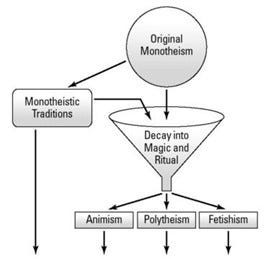The Elephantine Papyri in English
The Elephantine Papyri in English: Three Millennia of Cross-Cultural Continuity and Change (2nd edition) by Bezalel Porten.
“This important volume contains 175 documents from the Egyptian border fortresses of Elephantine and Syene (Aswan), which yielded hundreds of papyri in hieratic, Demotic, Aramaic, Greek, Latin and Coptic, spanning a period of 2000 years. The documents include letters and legal contracts from family and other archives, and are thus an invaluable source of knowledge for scholars of varied disciplines such as epistolography, law, society, religion, language and onomastics. The volume includes seven sections, each containing carefully translated and extensively annotated documents of one language group. Excellent cross-referencing allows the user to trace forerunners and successors. Each section is preceded by an introduction. The Aramaic, Demotic and Greek sections are concluded with a prospography. The book closes with a select topical index.”
“Bezalel Porten received his PhD from Columbia University in 1964 and since 1999 has been Prof. Emeritus in the Department of Jewish History of the Hebrew University in Jerusalem. Author and co-author of numerous studies on the Elephantine papyri, and, with Ada Yardeni, author of Textbook of Aramaic Documents from Ancient Egypt (4 volumes).”
Reader’s note: This is a fine translation of the 175 documents from the Egyptian border fortresses of Elephantine and Syene (Aswan) dating to the 5th and 4th centuries BC.
The historical context is that after the destruction of the First Temple by the Babylonians (also known as Solomon’s Temple) under King Nebuchadnezzar II in 586 BC (6th century BC) during the Siege of Jerusalem, a garrison of Israelites settled on Elephantine Island in Egypt and built a temple for the worship of YWH (i.e. Yahweh). These papyri illustrate the types of documents cited in the books of Ezra and Nehemiah while also filling in certain details described in those books.
However, they also continued worshipping false gods with their socioreligious depravity which had led to Yahweh removing his hand of protection over Israel and Judah resulting in Assyrian invasions followed by the Babylonian invasion, the destruction of the First Temple, and the first diaspora.
Some secular academics have attempted to use this as proof that the Israelite religion began as polytheistic; however, that is a false assertion. Clearly the original Israelite population that Moses led out of Egypt long before the Israelites ignored the prophets of Yahweh and fell away from exclusive monotheism to follow after neighboring country’s false pagan gods (resulting in Yahweh’s hand of protection being removed and the subsequent destruction of the First Temple and the first dysphoria) was originally exclusively monotheistic to Yahweh.
In fact, one can trace YHWH (i.e. Yahweh) back to Noah in Genesis (which contains pre-extant information predating Moses though there are excellent reasons to believe Moses was the primary compiler of Genesis) which the RTB scientifically testable local flood model for the ancient flood in the cradle of civilization recorded in various ancient accounts is 50,000 +/- 40,000 years ago (50,000 to 40,000 BC) [which is tens of thousands of years before even a pagan prototype to Baal existed].
This also rebuts those secularist academics who ignore or misrepresent the evidence for original monotheism (see Winifred Corduan’s “In the Beginning God” as a starting point for that discussion) and wrongly assert that Yahweh is but a later mythological construct of an earlier pagan god (note that invented pagan gods resulted from the decay of religion from original monotheism see figure 1.4 below) such as Baal or an alleged Baal prototype such as Hadad extending to the 3rd millennium BC (2,500-2,250 BC).
Fair Use: Copyright Disclaimer Under Section 107 of the Copyright Act in 1976; Allowance is made for “Fair Use” for purposes such as criticism, comment, news reporting, teaching, scholarship, and research. Fair use is a use permitted by copyright statue that might otherwise be infringing. All rights and credit go directly to its rightful owners. No copyright infringement intended.



